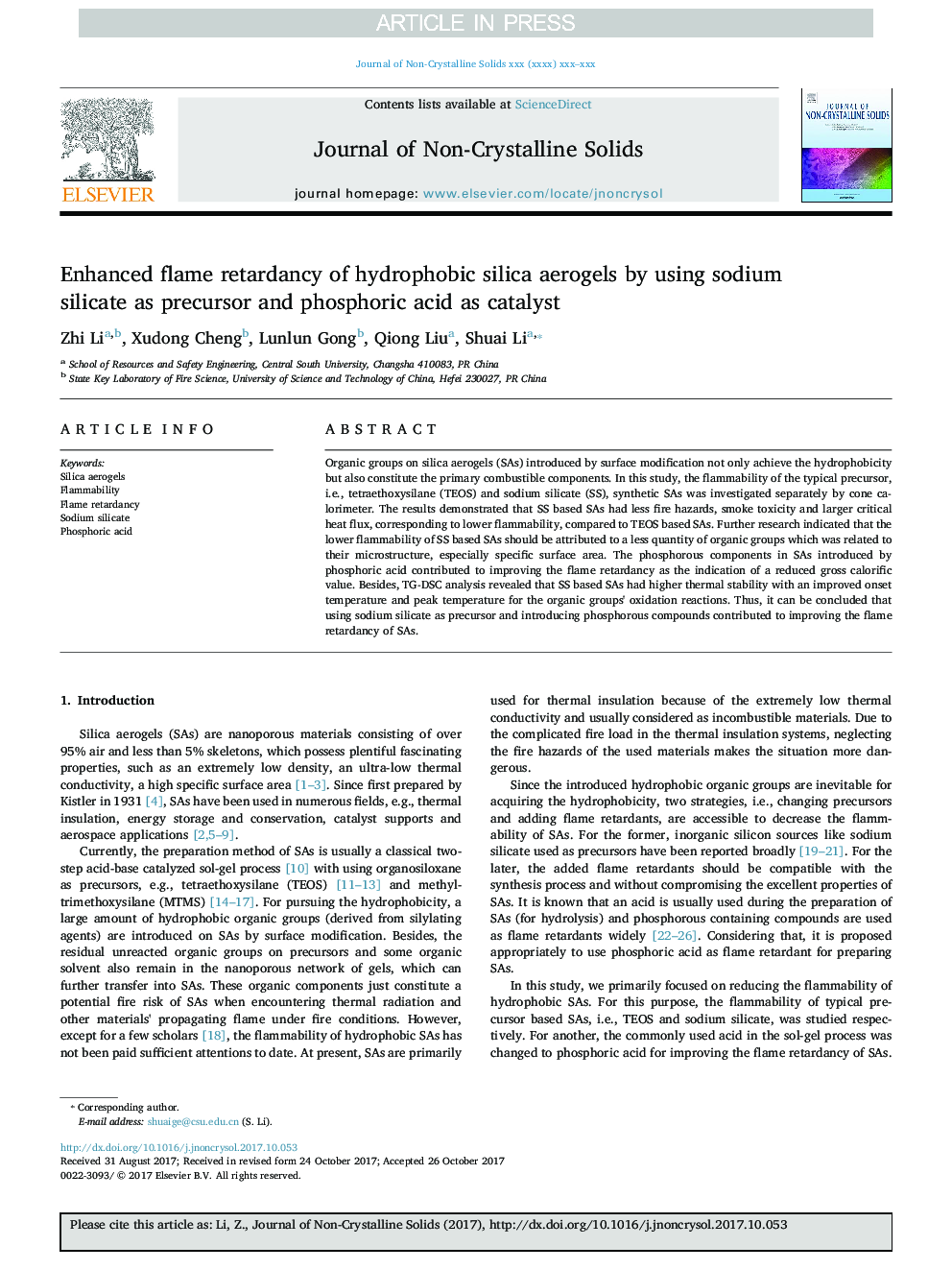| Article ID | Journal | Published Year | Pages | File Type |
|---|---|---|---|---|
| 7900383 | Journal of Non-Crystalline Solids | 2018 | 9 Pages |
Abstract
Organic groups on silica aerogels (SAs) introduced by surface modification not only achieve the hydrophobicity but also constitute the primary combustible components. In this study, the flammability of the typical precursor, i.e., tetraethoxysilane (TEOS) and sodium silicate (SS), synthetic SAs was investigated separately by cone calorimeter. The results demonstrated that SS based SAs had less fire hazards, smoke toxicity and larger critical heat flux, corresponding to lower flammability, compared to TEOS based SAs. Further research indicated that the lower flammability of SS based SAs should be attributed to a less quantity of organic groups which was related to their microstructure, especially specific surface area. The phosphorous components in SAs introduced by phosphoric acid contributed to improving the flame retardancy as the indication of a reduced gross calorific value. Besides, TG-DSC analysis revealed that SS based SAs had higher thermal stability with an improved onset temperature and peak temperature for the organic groups' oxidation reactions. Thus, it can be concluded that using sodium silicate as precursor and introducing phosphorous compounds contributed to improving the flame retardancy of SAs.
Related Topics
Physical Sciences and Engineering
Materials Science
Ceramics and Composites
Authors
Zhi Li, Xudong Cheng, Lunlun Gong, Qiong Liu, Shuai Li,
